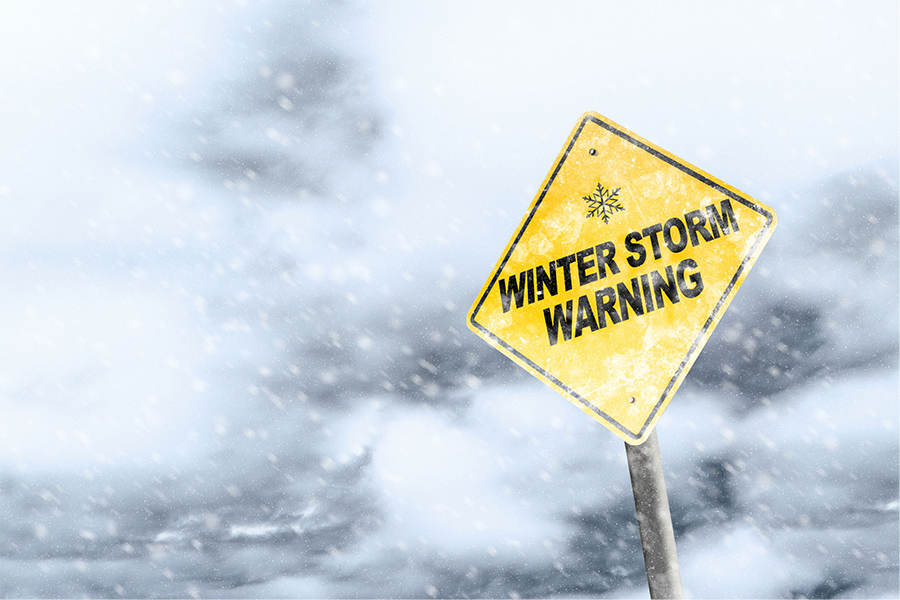Winter Storm
Winter storms can bring freezing rain, ice, snow, high winds, or a combination of these conditions. They can cause power outages that last for days, make roads and walkways very dangerous, and can affect community services. Planning and preparing can help you manage the impact of a winter storm and keep you and your family safe. A sustained power outage can have a significant impact on people who require electricity to power medical equipment, so make sure that you have a plan to take care of yourself and your family during an outage.

Know your risk
WHAT: A winter storm occurs when there is significant precipitation and the temperature is low enough that precipitation forms as sleet or snow, or when rain turns to ice. A winter storm can range from freezing rain and ice, to moderate snowfall over a few hours, to a blizzard that lasts for several days, or be a combination of several winter weather conditions. Many winter storms are accompanied by dangerously low temperatures. WHEN: Winter storms can occur from early autumn to late spring depending on the region of the country.WHERE: Winter storms and colder than normal temperatures can happen in every region of the country.
IMPACT: Extreme winter weather can immobilize an entire region. Ice and heavy snowfall can knock out heat, power, and communications services, sometimes for several days. Driving and walking can become extremely hazardous due to icy conditions, snowfall accumulation, low visibility, or extreme cold. People may need to stay at home or work without utilities or other services, until driving is safe. Pipes and water mains can break.
Know the terms
Terms used to describe changing winter weather conditions and what actions to take. These terms can be used to determine the timeline and severity of an approaching storm.
Advisory: The NWS issues winter weather advisory when conditions are expected to cause significant inconveniences that may be hazardous. If caution is used, these situations should not be life-threatening.Watch: The NWS issues a winter storm watch when severe winter conditions, such as heavy snow and/or ice, may affect your area but the location and timing are still uncertain. A winter storm watch is issued 12 to 36 hours in advance of a potential severe storm. Tune in to NOAA Weather Radio, local radio, TV, or other news sources for more information. Monitor alerts, check your emergency supplies, and gather any items you may need if you lose power.
Warning: The NWS issues a winter storm warning when 4 or more inches of snow or sleet are expected in the next 12 hours, or 6 or more inches in 24 hours, or ¼ inch or more of ice accumulation is expected. The NWS may also issue a warning if the storm is expected to hit during high-traffic times, like rush hour. Stay indoors, and keep warm and dry. Minimize driving.
Ready.gov - Build a Kits
Red Cross - Winter Storm Safety